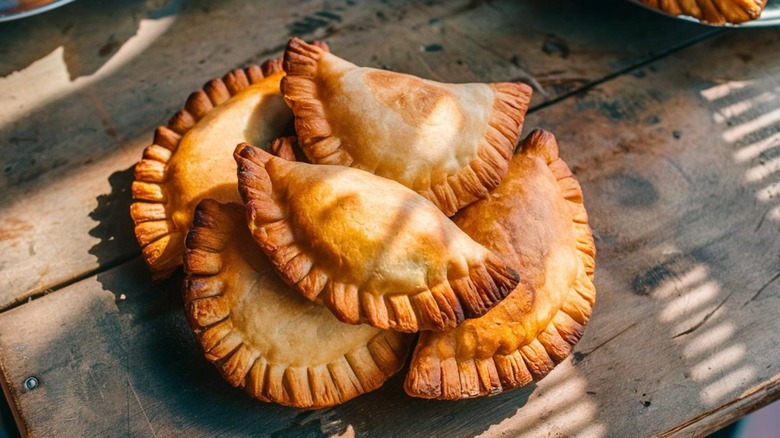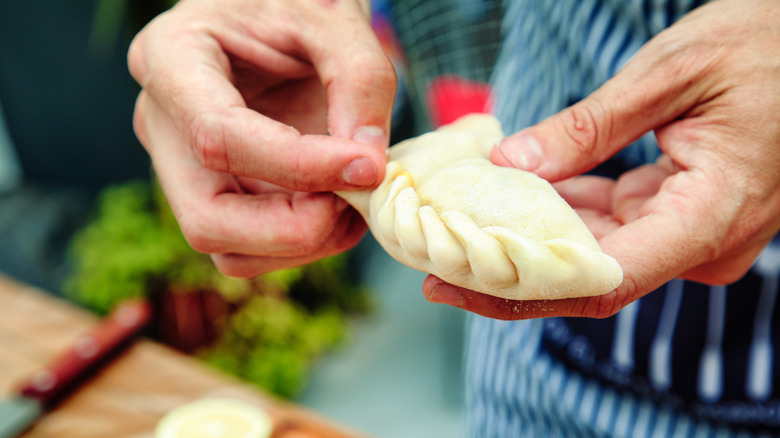The Expert Advice You Need To Make Perfect Empanada Dough
There's nothing more frustrating to bakers than when the kitchen temperature gets too hot or too cold and they can't control the outcome of their bakes. Jose Horrach, executive chef of Chica & The Don, knows how they feel. Speaking exclusively to Chowhound, Horrach said the temperature of the environment is something he pays particularly close attention to when making dough. This is particularly true when he's making the dough for empanadas, a specialty on the restaurant's menu of refined Latin American street food.
"When making empanada dough, or any dough for that matter, the room has to be at a perfect temperature," Horrach says. "If it's too hot or humid, that tends to make the dough more loose and sticky because of the moisture in the air, and if it's too cold, the dough will firm up, making it tight and harder to manipulate."
Empanadas are generally filled with meat, fish, or cheese and some vegetables. One of the tastiest doppelgänger foods you can get, empanadas are similar to Indian samosas, Japanese gyoza, and English pasties. Empanadas and calzones also look similar, but they are very different pastries. At Chica & The Don, which is located in Manhattan's Flatiron neighborhood, Horrach fills empanadas with spinach and cheese, birria (a delicious Mexican stew), chicken, and lobster.
Work with cold ingredients
One empanada-making faux pas will sound familiar to those well-versed in the most common pie crust mistakes to avoid. As with pie crust, you should work with cold ingredients, especially when combining butter, lard, or shortening with the flour, salt, and eggs used in most recipes. And the need for cool temperatures doesn't stop when you're done mixing. Refrigerate the dough for at least one hour and up to two days so it retains its shape and seals easily when you fill it. Another suggestion is to add vinegar to the dough, making it more pliable and easier to work with.
Even when keeping the ingredients cold, pay attention to the temperature of the room. There are no hard and fast rules, but keep your kitchen in the range of 70 to 75 degrees Fahrenheit with 50 percent humidity (smart thermostats these days will tell you that). That's still too hot for the dough, so you may have to put it or the ingredients back in the fridge periodically. But it's a good compromise between your comfort and safety and the temperatures needed for good empanada outcomes.

